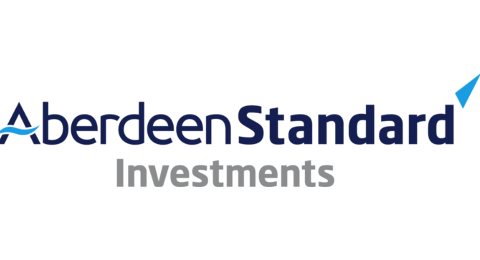Beekeeping, not box-ticking: how we put ESG into practice in real estate
17 October 2018Beekeeping, not box-ticking: how we put ESG into practice in real estate
17 October 2018Environmental, social and governance (ESG) concerns are now an increasingly common part of the investment process. But for us, ESG isn’t just a box-ticking exercise – far from it. It’s a means by which we ensure that our property investments enhance their local environment and community – and our investment returns too.
So what does ESG mean in practice? Well, it varies tremendously from site to site. But the best way to explain it is with a concrete example. Or, in this case, an example that shows that real estate can be about so much more than concrete.
Aberdeen Standard Investments manages the Roaring Meg Shopping Park in Stevenage, UK. This is a retail park with a total area of 33,000 square metres. It houses 25 shopping and leisure units and also includes 1.5 acres of woodland. This is part of Monk’s Wood, a much larger area of ancient woodland.
Any building forms a part of the community in which it exists. Retail parks are no exception. That’s why we’ve taken great efforts to ensure that Roaring Meg enhances the community, not only through providing shopping and leisure facilities, but also through enhancing the local environment and reaching out into the local community. To this end, we’ve been collaborating with Workman, our managing agent, to develop a series of biodiversity and community initiatives.
Birds, bees and bushes
One of our major initiatives at Roaring Meg has been the installation of two beehives in the 1.5 acres of woodland within the park. Through the role they play in pollinating crops and flowers, bees are a vital part of our ecosystem. But the bee population has declined significantly in recent years. There are various factors in this: pesticides, diseases, climate change and the destruction of food sources and habitat. By installing hives at Roaring Meg, we’re taking small steps to redress the declines in the local area.
We’ve also planted a variety of wildflowers, trees and bushes to enhance the local environment. These include knapweed, which is an important source of pollen for bees, common teasel, which provides food for birds, woundwort and yellow rattle, which boosts plant diversity by restricting the growth of grass. Meanwhile, hazel trees support caterpillars, dormice and ground-nesting birds, while holly bushes allow birds to nest and offer a good source of dry leaves for hibernating mammals to shelter in. We’ve planted honeysuckle too, which attracts both butterflies and birds.
Alongside the planting project, we’ve taken steps to improve the woodland environment in other ways. We’ve created log piles in the neighbouring woodland to provide appropriate habitats for wood wasps, woodlice and beetles. We’ve used the traditional forest-management technique of coppicing to create suitable conditions for plants and animals that need more open habitats. And we’ve restored some ancient hedgerows, thus creating natural corridors and boundaries that support plant life and make the environment more visually attractive for visitors.
Building local links
We’ve combined our environmental initiatives with a variety of social projects to integrate Roaring Meg into the local community.
Through Workman, we helped to launch a creative writing competition with marketing company BeWonder. Invitations to participate were extended to children at more than 20 nearby primary schools. The children were asked to use the park’s name – Roaring Meg – as a starting point for an imaginative story. The prizes were donated by two of the retail park’s tenants, Partyman and Hobbycraft.
To build on the success of this competition and our biodiversity projects, we’re now looking at other ways to foster community.
These include allowing small groups to visit the beehives for educational experiences and bottling the bees’ honey so that our tenants can use it to raise charity donations from their customers. We’re also looking to build stronger links with local schools and develop the woodland area as an educational resource. As our woodland is part of the larger Monk’s Wood area, we are looking to explore its full potential for use by schoolchildren, community groups and visitors. We’ve already got the ball rolling on this with our Eco-Easter event, teaching local school children about recycling in a fun and interactive way, and involving lots of (environmentally friendly) glitter and the chance to make and take away their own friendly plant.
Win/win
Our ESG initiatives at Roaring Meg have a clear, positive impact on the local environment and community. But they also enhance our investment in the retail park. They make the shopping park more attractive for visitors through the greater diversity of plant and animal life in the area. They also create potential for future attractions specifically related to biodiversity. And finally, they create a positive perception of Roaring Meg that can only help to encourage visitors. We believe that this favourable impression is well merited – and that it shows how ESG in property is a win/win proposition.
This article was originally published on the Aberdeen Standard Investments website here.
